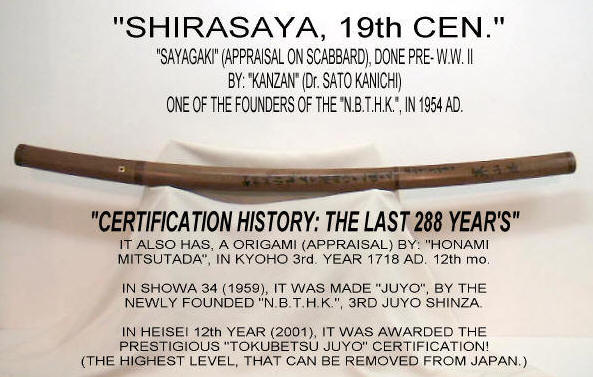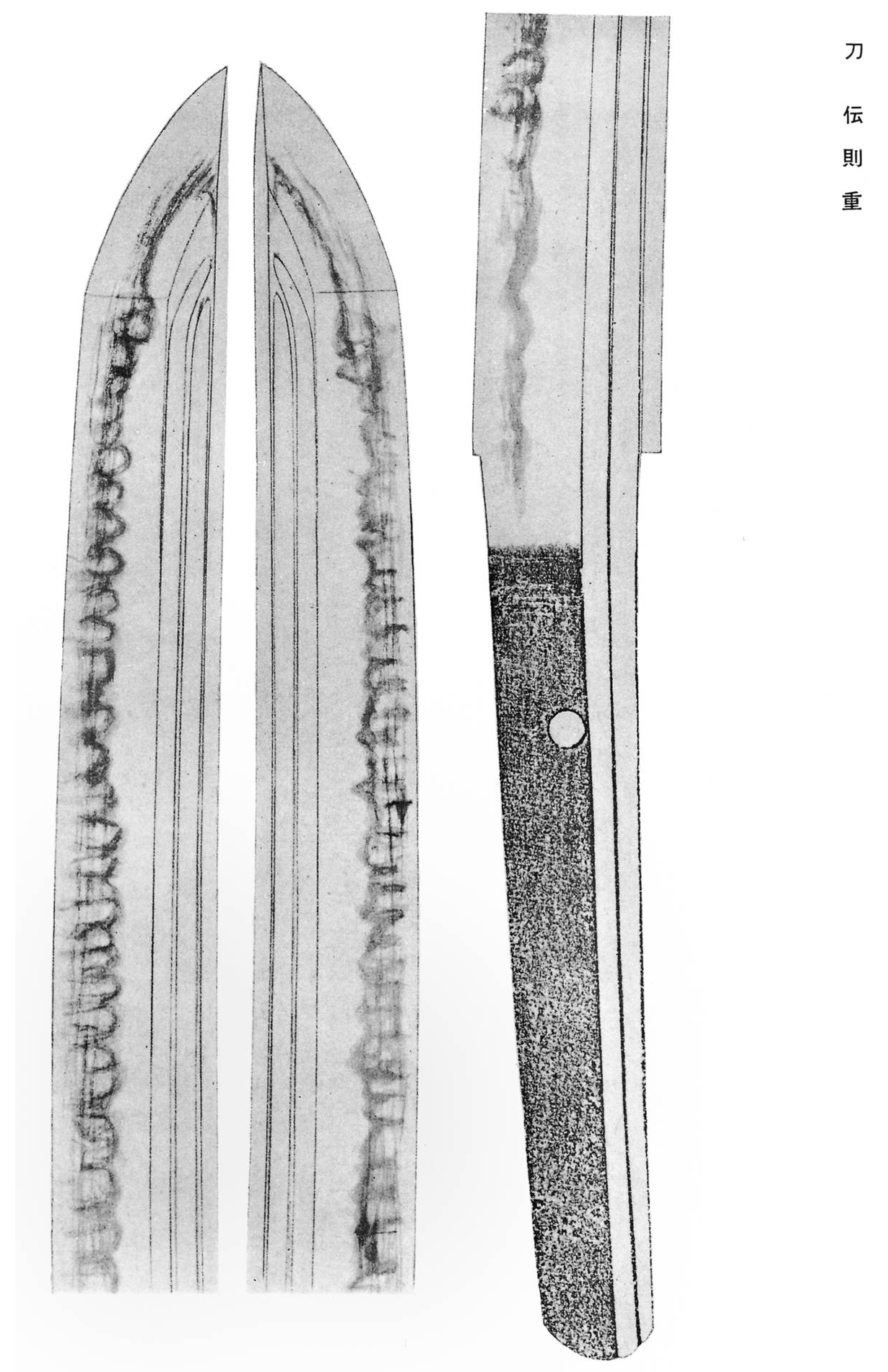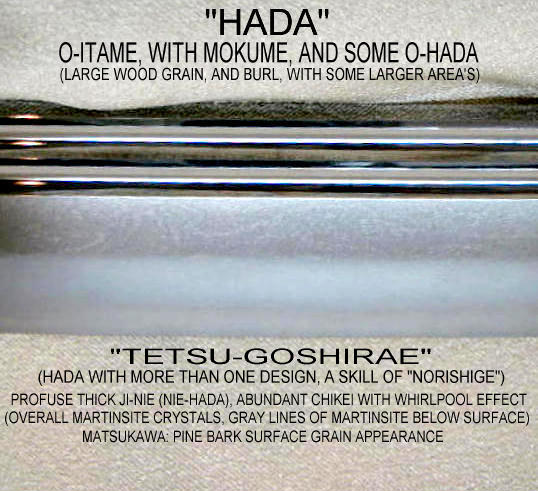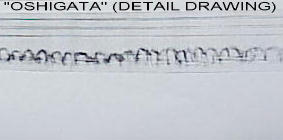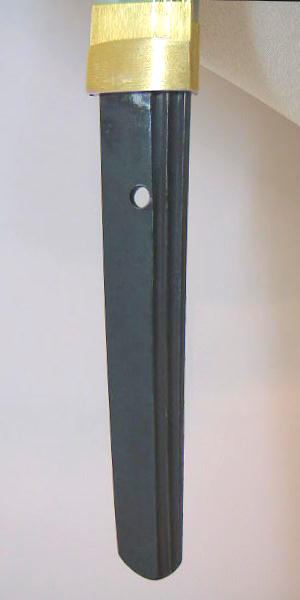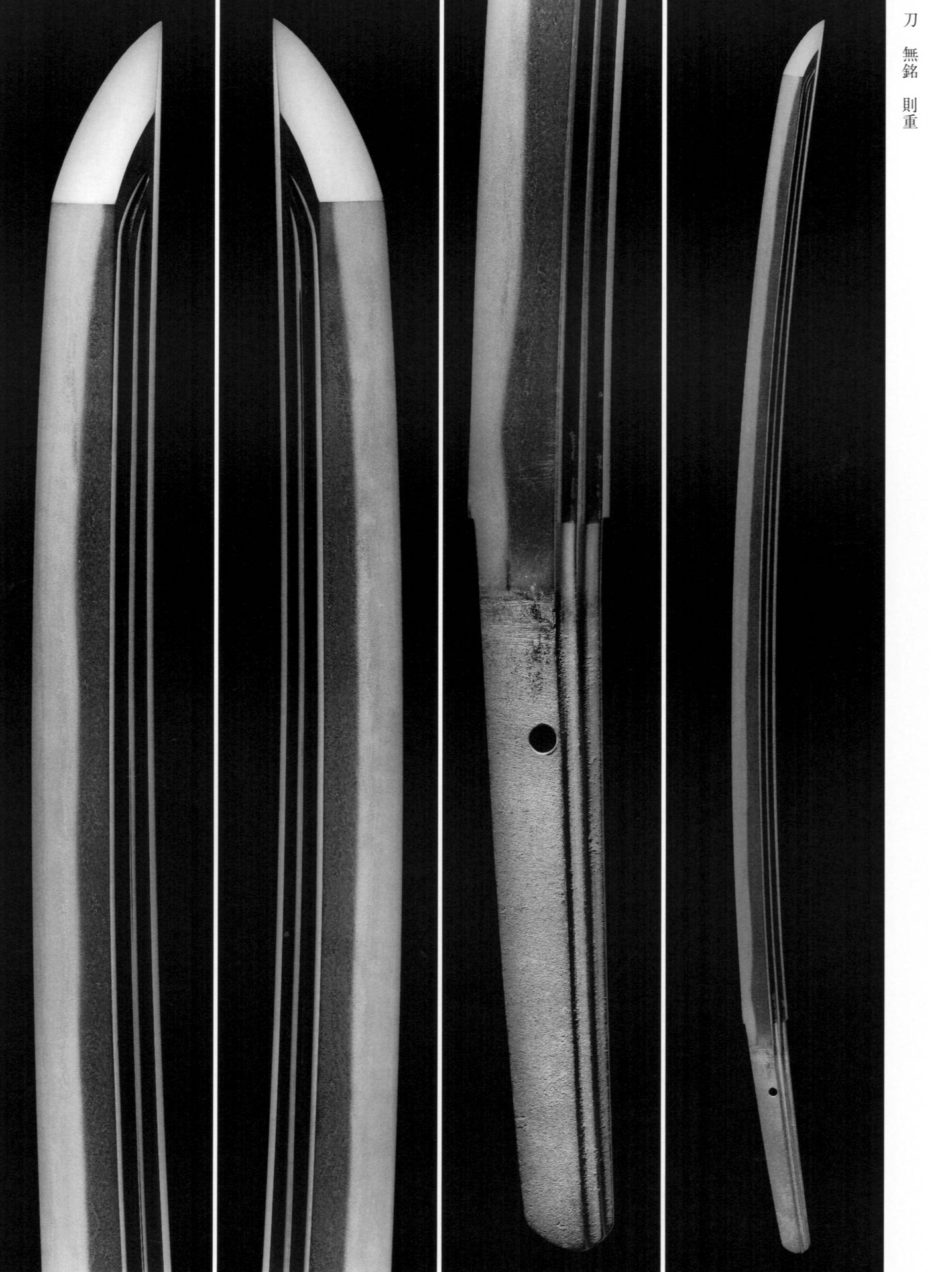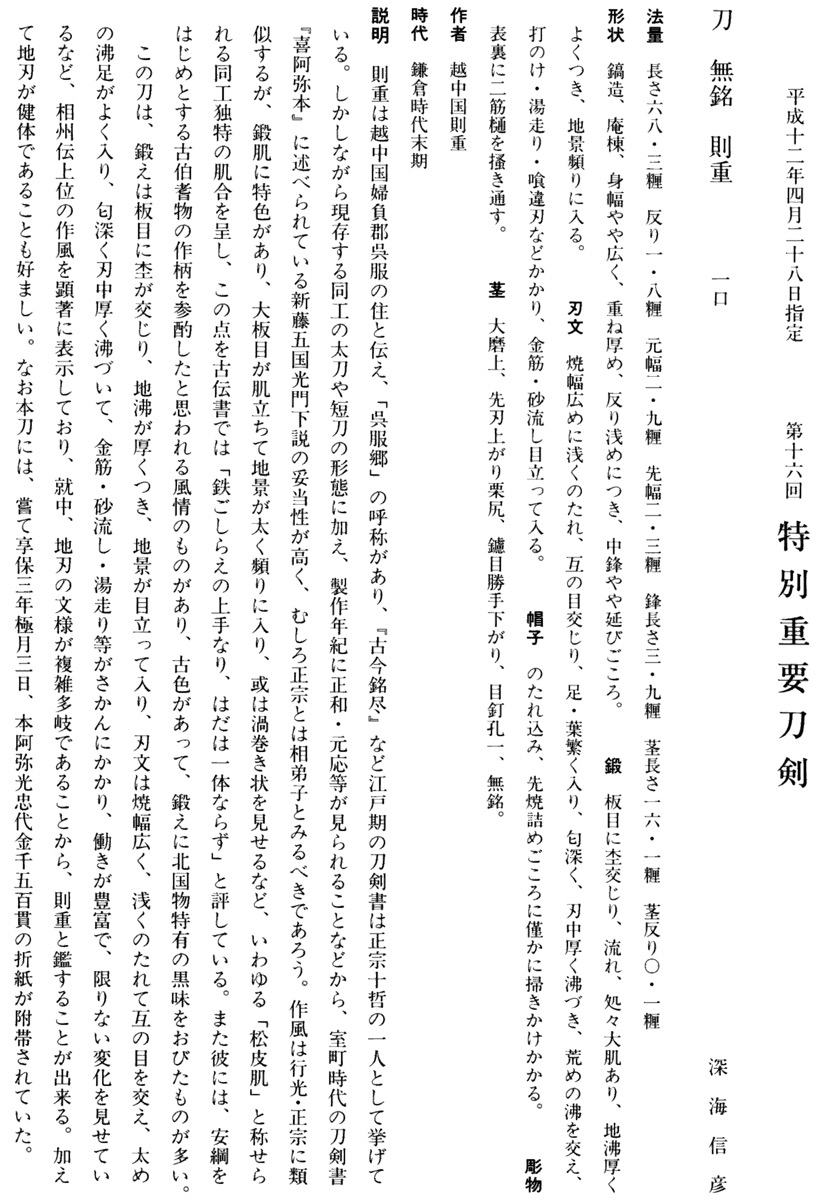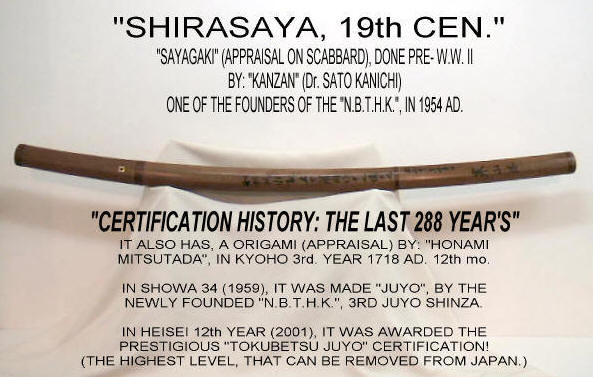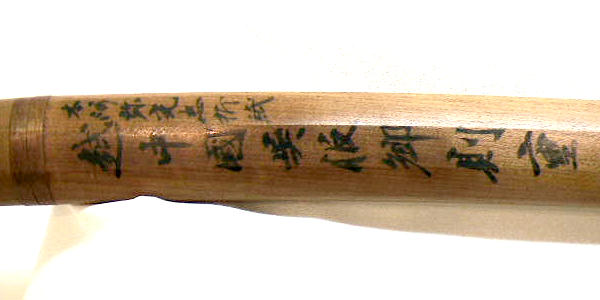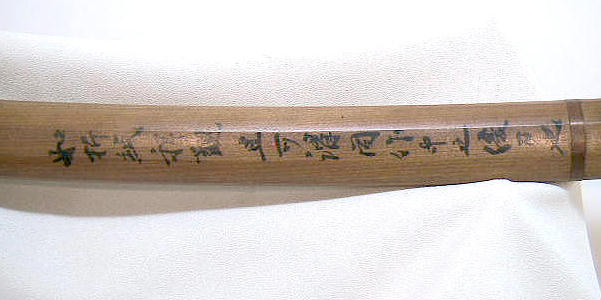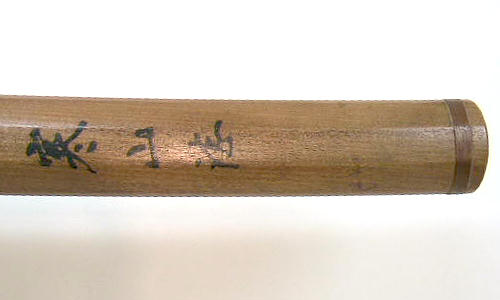Gallery Page (Display Only)
NORISHIGE, SOSHU, C- 1320 AD
Student of Masamune
Tokubetsu juyo token by the NBTHK
saya-gaki by, KANZAN, Dr Sato
This blade by Norishige is Tokubetsu Juyo (one step above Juyo). Norishige is one of the most important sword smiths in the history of Japanese Swords… N.B.T.H.K stated on the Juyo narrative that the work was so similar to Masamune that you can call them the same. It is in absolutely perfect condition, even the Horimono (grooves) were done by Norishige. It is a highly recommended candidate for Juyo Bijutsuhin (next level up from Tokubetsu Juyo) but of course it would not ever leave Japan, as it would fall into the Cultural property category.
Juyo Zufu translation:
Jūyō-tōken at the 3rd jūyō shinsa held on July 7, 1959
katana, mumei: Den Norishige (伝則重)
(w/ Kōchū origami from Kyōhō three)
Kōbe, Yano Yatarō (谷野弥太郎)
Measurements
nagasa 68.2 cm, sori 2.1 cm, motohaba 3.0 cm, sakihaba 2.4 cm, kissaki-nagasa 4.1 cm, nakago-nagasa 16.0 cm, no nakago-sori
Description
Keijō: shinogi-zukuri, iori-mune, due to the ō-suriage a shallow sori, elongated chū-kissaki
Kitae: itame that is mixed with masame and that features plenty of ji-nie, jifu, and chikei
Hamon: hiro-suguha-chō that tends to a gentle notare with large undulations and that is mixed with gunome, ashi, yō, sunagashi, ara-nie, and kinsuji
Bōshi: widely hardened midare-komi with a hakikake, nie, and kinsuji
Horimono: on both sides a futasuji-hi that runs as kaki-tōshi through the tang
Nakago: ō-suriage, kurijiri, gently slanting katte-sagari yasurime, one mekugi-ana, mumei
Explanation
It is said that Norishige (則重), who was a resident of the rural township of Gofuku (Japanese: Gofuku-Gō, 呉服郷) of Etchū province, had studied with Sōshū Masamune (正宗), but also the theory exists that he had been a fellow student of Masamune. In any case, on the basis of the shape and interpretation of Norishige’s blades, we can agree with either tradition and can place him in the close vicinity of Masamune. Only two signed tachi, but several signed tantō of Norishige exist, and the interpretation and quality of the latter suggest that the smith had placed a special emphasis on the production of tantō. Many unsigned katana exist that are attributed to Norishige, although only few of them can be considered as actually going back to his hand. The blade described here comes with an origami issued by Hon’ami Kōchū (本阿弥光忠, ?–1719) on the third day of the twelfth month of Kyōhō three (享保, 1718), in which he attributes it to Norishige and evaluates it with 1,500 kan. The jiba of the blade shows the characteristic features of the Norishige School and the deki is excellent. The shape with its elongated kissaki suggests a production time from the Nanbokuchō period and both ji and ha are perfectly healthy (kenzen).
See near the end for Tokubetsu Juyo Zufu and sayagaki translations.
Measurements
nagasa 68.3 cm, sori 1.8 cm, motohaba 2.9 cm, sakihaba 2.3 cm, kissaki-nagasa 3.9 cm, nakago-nagasa 16.1 cm, nakago-sori 0.1 cm
Description
Keijō: shinogi-zukuri, iori-mune, rather wide mihaba, thick kasane, shallow sori, somewhat elongated chū-kissaki
Kitae: itame that is mixed with mokume, nagare, and some ō-hada in places and that features plenty of ji-nie and much chikei
Hamon: widely hardened and gently undulating notare with a wide nioiguchi and mixed with gunome, many ashi and yō, ara-nie, uchinoke, yubashiri, kuichigai-na, and prominent kinsuji and sunagashi, the ha features plenty of nie
Bōshi: notare-komi that almost runs out in yakitsume manner and that features a hint of hakikake
Horimono: on both sides a futasuji-hi that runs as kaki-tōshi through the tang
Nakago: ō-suriage, ha-agari kurijiri, katte-sagari yasurime, one mekugi-ana, mumei
Artisan
Norishige from Etchū province
Era
End of Kamakura period
Explanation
As Norishige (則重) lived in the township of Gofuku (Japanese: Gofuku-Gō, 呉服郷), located within the Nei District (婦負郡) of Etchū province, he is also referred to as Gofuku-Gō. According to the Kokon Mei Zukushi (古今銘尽) and other Edo period sword publications, Norishige was one of the Ten Students of Masamune, but judging from the shapes of his tachi and tantō and extant dates from the Shōwa (正和, 1312-1317) and Gen’ō (元応, 1319-1321) eras, it appears that he was rather a fellow student of Masamune (正宗) under Shintōgo Kunimitsu (新藤五国光), as already Muromachi period sword texts like the Kiami Hon (喜阿弥本) suggest. Norishige’s workmanship is close to that of Yukimitsu (行光) and Masamune, but his unique and standing-out ō-itama that features many thick chikei, which can also appear in a whirlpool shape, and that is referred to as matsukawa-hada (松皮肌) distinguishes him from Yukimitsu and Masamune. Period sword texts describe that typical approach as: “Highly skillful in forging steel and displaying a non-uniform hada structure.” It is possible that Norishige was inspired by works of Yasutsuna (安綱) and other Ko-Hōki smiths with this forging, which is classical and often has the blackish appearance that is typical for works from the northern provinces (Japanese: Hokkoku-mono).
This blade shows a kitae in itame that is mixed with mokume and that features plenty of ji-nie and prominent chikei. The hamon is a widely hardened and gently undulating notare with a wide nioiguchi and is mixed with gunome, many thick nie-ashi and plenty of kinsuji sunagashi, and yubashiri. The ha shows an abundance of nie and hataraki and has a large amount of variation. Thus, we clearly recognize the hand of one of the great early Sōshū masters and the apprarance and within this group, the complexity of the jiba attributes the blade to Norishige. In addition, it comes to advantage that both ji and ha of the blade are very healthy. Also, the blade comes with an origami that was issued by Hon’ami Kōchū (本阿弥光忠, ?–1719) on the third day of the twelfth month of Kyōhō three (享保, 1718).
Sayagaki translation:
本阿弥光忠折紙
越中国呉服郷則重
刃長貮尺貮寸五分有之
如折紙拝観且所謂同作中之優刀也
寒山誌
Hon’ami Kōchū origami
Etchū no Kuni Gofuku-Gō Norishige
Hachō ni-shaku ni-sun go-bu kore ari
Goto origami haikan katsu iwayuru dōsaku-chū no yūtō nari
Kanzan shirusu
With origami by Hon’ami Kōchū
Gofuku-Gō Norishige from Etchū Province
Blade length ~ 68.2 cm
I am in agreement with the origami and it can be said that this masterly blade is one of the best works by this smith in existence.
Written by Kanzan.
This Sword is not available for purchase.
If you wish to purchase a Japanese Sword, please view our Nihonto for sale page or contact us directly via email or by telephone at 1(608) 315-0083 any time. Please include specifics of what you seek, i.e.: Katana, maker, era, price range, etc.
Pictures and content may not be copied without the express permission of samuraisword.com ©



